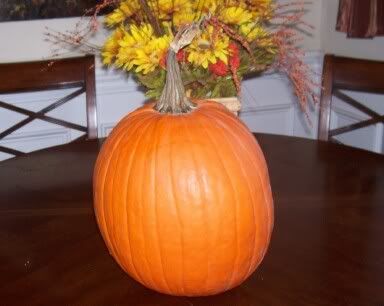
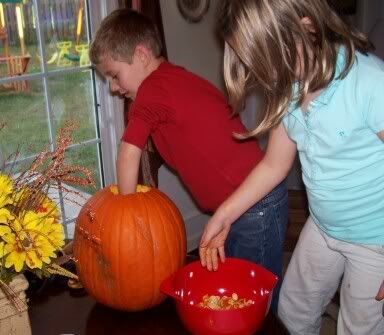
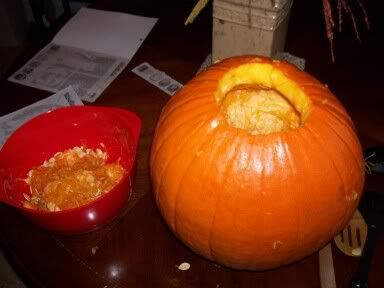
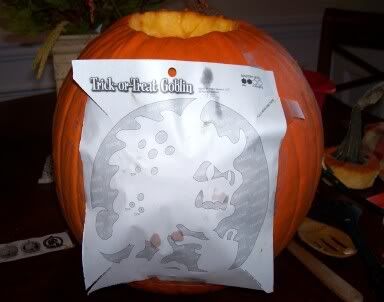
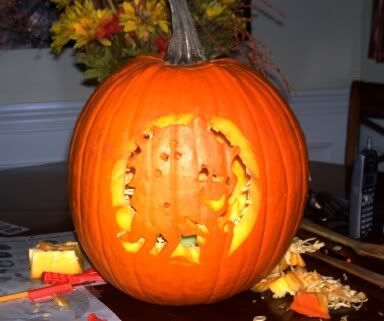






|
WTM Blog Ring |

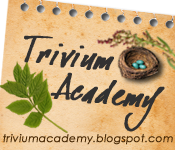







A veteran homeschooler told me a year ago, 'you cannot go deeply into everything, you cannot specialize in every subject- you will have to pick or drown.' Urgh. I hate it when others are right! There's no possible way I can focus on learning French fast and deep enough to teach my children to be bilingual. I know all the arguments of raising children with two languages, the positives and negatives but I'm waving my white flag. I surrender. No more French until after Latin studies.
Urgh. I hate it when others are right! There's no possible way I can focus on learning French fast and deep enough to teach my children to be bilingual. I know all the arguments of raising children with two languages, the positives and negatives but I'm waving my white flag. I surrender. No more French until after Latin studies.
Another factor is that I do not have the support I thought I would have, not even from Camille, who loves learning French but also wants to learn Italian and Spanish and just flits from one language to the next without a thought! So. French is being put on hold until after Latin. Ideally, I would like Latin to continue until the kids can take the either the National Latin Exam or have the equivalent of high school Latin accomplished. There are too many benefits of studying Latin over other languages.
I've let go of a few other things. I cannot micromanage my kids all the time. It sucks the joy of life right out of me. Character training, although it sounds all wonderful and nice to study, will be done more informally and natural. I do want to use something like Young Peacemaker by Corlette Sande at some point unless I find something else more suitable for us.
What is important? Reading, writing, math and curiosity! Service learning, actively being a part of change for the positive. If we're going to focus on those things, other things will have to take seat further down on the list of priorities. I've learned the hard way that although what others do sounds nice, it may just be nice for them. I'm sure my wake-up call hasn't even happened in the fullest yet, Danny will be home next year. Woo boy. Literally, wooo BOY.
Your result for What Your Taste in Art Says About You Test...

Islamic art is developed from many sources: Roman, Early Christian, and Byzantine styles were taken over in early Islamic architecture; the architecture and decorative art of pre-Islamic Persia was of paramount significance; Central Asian styles were brought in with various nomadic incursions; and Chinese influences . Islamic art uses many geometical floral or vegetable designs in a repetitive pattern known as arabesque. It is used to symbolize the transcendent, indivisible and infinite nature of Allah.
People that like Islamic art tend to be more traditional people that appreciate keeping patterns that they learned and experienced from their past. It is not to say that they are not innovative personalities, they just do not like to let go of their roots. They like to put new ideas into details and make certain that they will work before sharing them with others. Failure is not something they like to think about because they are more interested in being successful and appreciated for their intelligence. These people can also be or like elaborate things in their life as long as they are tasteful. They tend to prefer geometric patterns and vibrant colors.
Take What Your Taste in Art Says About You Test at HelloQuizzy

We went to a Public Safety Day where the kids met local firefighters, police and other community helpers. We learned about fire safety, emergency procedures and toured different types of emergency vehicles including a mobile communications center. We watched firefighters pry open a wrecked car with the jaws of life and the kids rode an antique fire truck. Then we headed over to a Fall Festival where the kids loved a petting zoo (poor animals) and I was able to talk to some of the major environmental groups in our area such as the marine extension from the University of Georgia, Savannah Tree Foundation, USDA, a few historical sites had booths and a few others. My poor dh had the kids while I asked question after question and only moved on because there were other people around who wanted to chat and the kids and dh were pretty restless. It was a fun day. We have a few more 'Fall Festivals' to attend this year, the kids are really in for a treat.
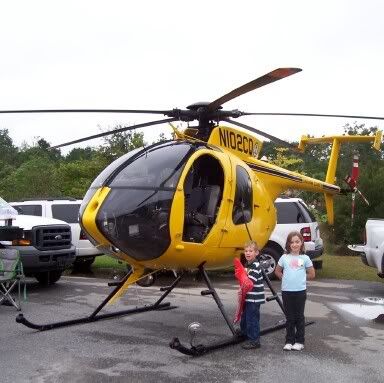

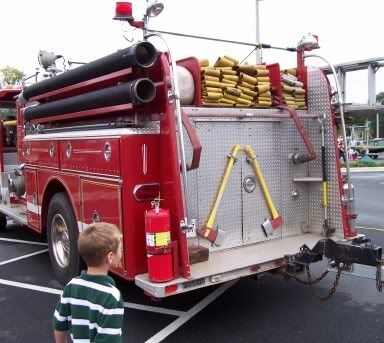
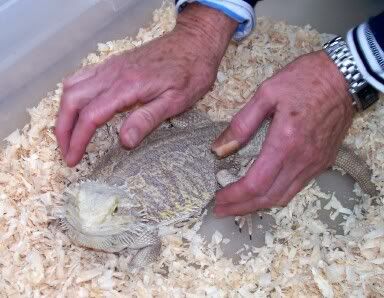
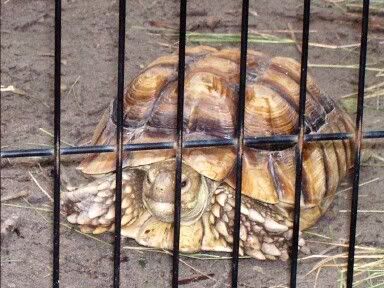
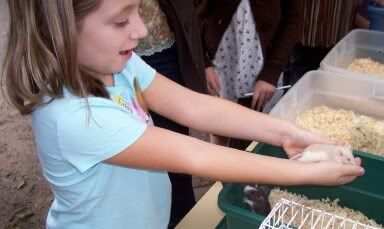


We have three more weeks to go before a two week break. I'm ready for a break and even through we could, we're not because I don't have anything to DO and I'll have Year 3, Unit 2 to plan out during the two week break, not to mention Thanksgiving!
This is called perseverance. We're studying South America during history for the next three weeks and I better muster up the enthusiasm I had seven weeks ago! Nine weeks is a long time but, especially when you're in week 7. I'm one of those types that needs something to do when we take a break because I cannot just. take. a. break. In fact, during our break, Camille will be doing Times Tales with a concentrated effort and reading everyday. I might even have her review her Latin vocabulary so that it stays fresh.
So why am I talking about wanting to take a break when taking a break isn't even really a break? Illusions are nice to have now and again. The idea that we don't have to do something would be nice. I feel very boring right now. Our last weekly report showed that, we did x, y, z and it's all going okay. Blah, blah, blah. Lol. At least I can laugh at myself.
After much deliberation and prayer, as well as bugging other homeschoolers, we have finally devised a plan for 4th grade science that we are excited about.
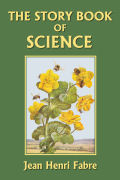 Fourth Grade: This year we will explore topics as they interest us as we read The Storybook of Science by Jean Henri Fabre. Topics range from ants to metals.
Fourth Grade: This year we will explore topics as they interest us as we read The Storybook of Science by Jean Henri Fabre. Topics range from ants to metals.
Milestones in Science by Thames & Kosmos will provide more information and experiments covering the accomplishments of over 140 scientists and civilizations. Great Inventors and Their Inventions by Frank Bachman will supplement.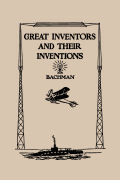 Nature walks & studies will continue. The little details such as how we will keep a science notebook, whether we will profile the scientists we meet and learn about is still up in the air.
Nature walks & studies will continue. The little details such as how we will keep a science notebook, whether we will profile the scientists we meet and learn about is still up in the air.
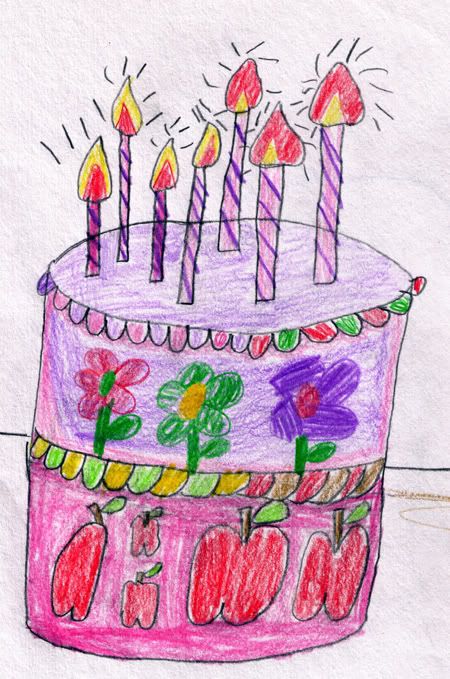

I've been sort of quiet, I know. I'm researching and today I'm off to explore Goodwill and a few used bookstores. The kids are with dh, an impromptu field trip to the radio station as he records a 30 second advertisement for the church and then lunch out.
I've been developing an overview for our science studies for K-12 and thinking and reading about how best to approach it. There are so many details that I've put off posting about it, not to mention the gathering of resources takes time b/c interlibrary loan is not super quick. I've purchased a few used items b/c I couldn't get them through any other source and I hope to be able to post about it soon and get all my thoughts out. Convoluted as they are, lol.
Our weekly report will be up sometime this weekend with a few pictures. I think the blog is loading slow b/c of all the pictures.
There's a danger when you engage your children in nature study, they may want to do it ALL the time! Three different occasions since our Friday nature walk...
Monarch Butterfly
Camille found a monarch butterfly on the ground and brought it to me. The poor thing's wing was broken so I didn't see the harm in allowing her to hold it. I had her put it back on the milkweed plant we have which has bloomed again since the monarch caterpillars left.
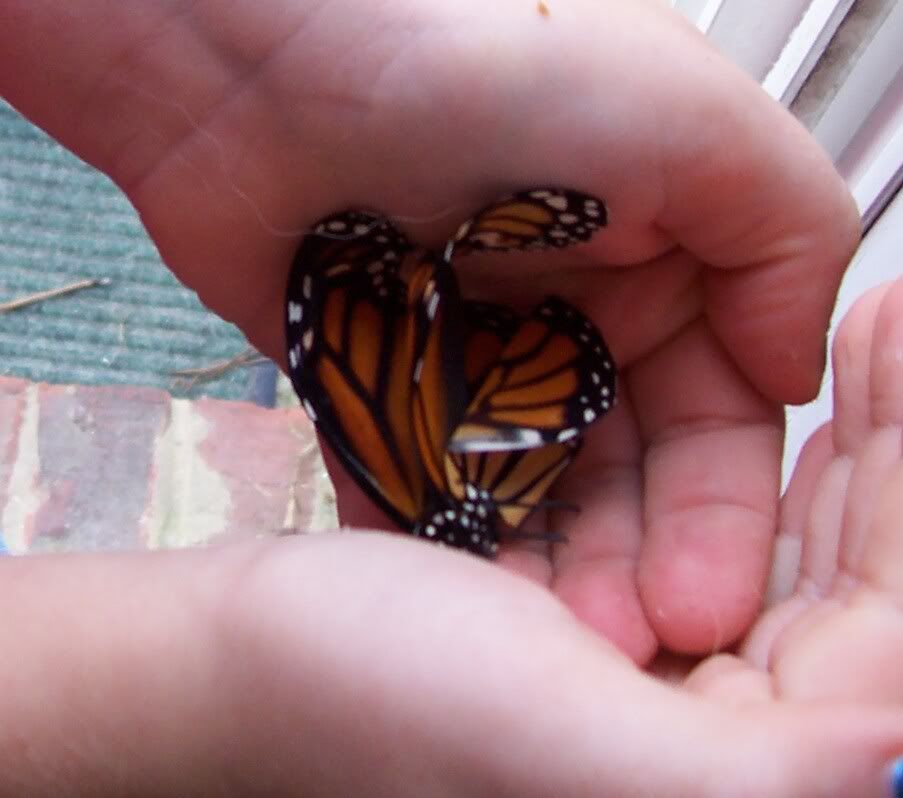

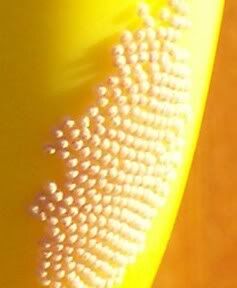
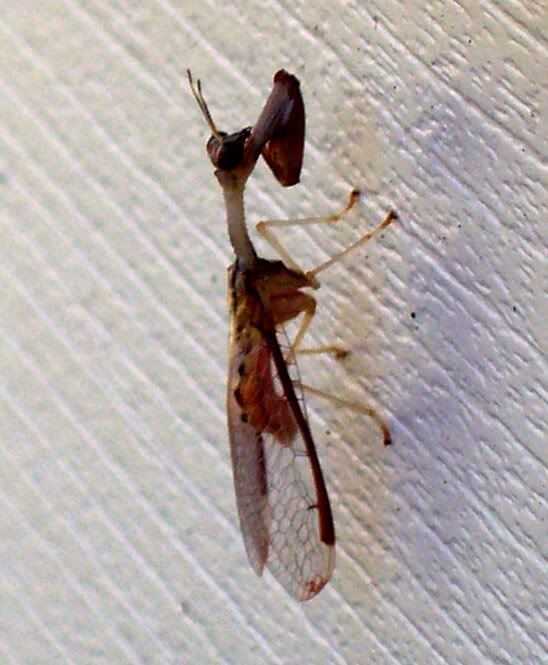
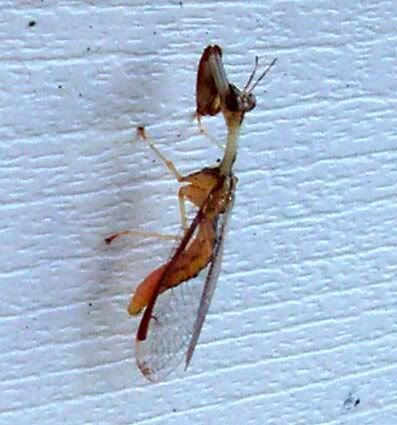
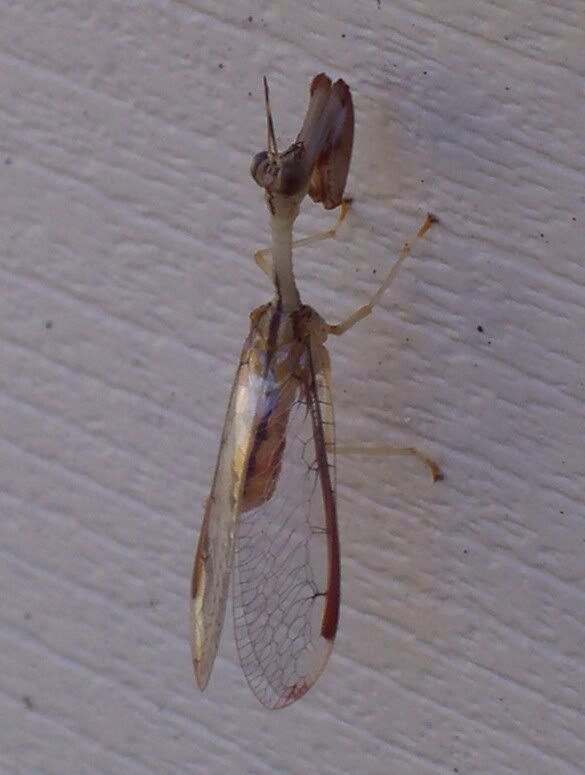
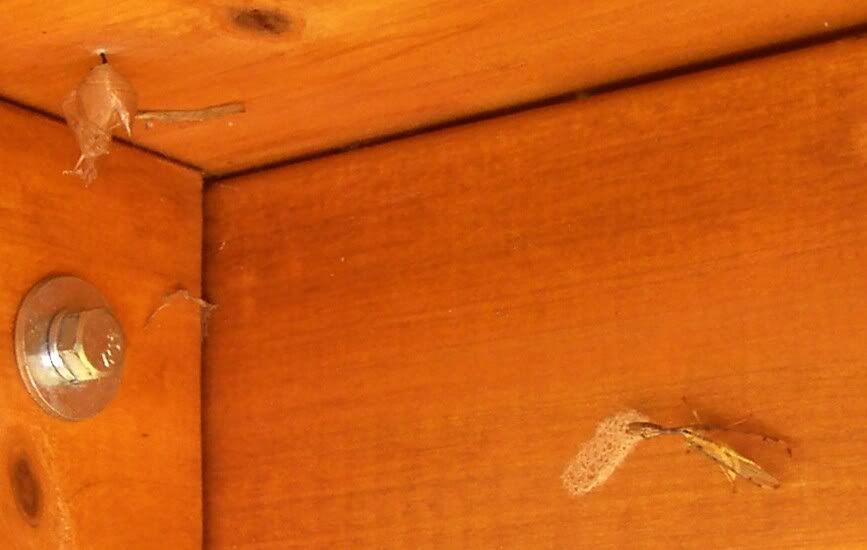

I've been thinking about what we'll be using next year in 4th grade for science lately and I've been tremendously blessed as all the options that I'm considering are in someway or another on their way to me. A generous fellow homeschooler has allowed me to preview her copy of The Elements: Ingredients of the Universe by Ellen McHenry, I purchased a used copy of God's Design for Chemistry: Properties of Atoms and Molecules for less than half the retail price and I have a few books coming from the library via interlibrary loan so I can have all the options side by side and make a decision about our 4th grade studies.
A friend recently asked me about studying biomes, which is what we'll be doing in 5th grade and as I was providing her links and resources it dawned on me that I didn't know what we were going to do! Before I put that thought off thinking it's too soon to develop a plan for 5th-8th studies, I realized that what we do in 5th and up will determine how I need to approach our studies in 4th and even now in 3rd. I don't want 5th grade to be *BAM*, now you're in 5th grade you need to start doing this and that. I want 4th grade to be the bridge between what we're doing now and what we will be doing. A perfect example is science vocabulary, if I expect Camille to write out 5-10 words and their definitions a week in 5th, I want to start her out with 2-3 words a week now in 3rd or 4th.
I looked at all the major curricula available on the homeschool market. I gave everything a chance and I could not find something that covered animals in a way that would be challenging to us that would hold our interest for an entire year and still allow us to read living books or provide enough hands-on, learning through doing type of approach. I decided that I'd make our own and build all the major different habitats in whatever ways we could. I found the book Habitats by Pamela Hickman at www.christianbook.com for $2.99 and decided that would be our real life application. The only thing left to do was to find a spine to use for the nonfiction information. I also decided that I needed to find a new spine for Danny since when Camille is in 5th, he'll be in 1st and we'll being doing our science together.
The author warns that this book was not written to be fully integrated with any other subject area or any specific grade level.
Each chapter of the book addresses a major phylum of animal and presents information about :
-phylum's classification
-diversity and distribution (anatomical characteristics and habitats)
-collection of specimens
-maintenance of specimens
-health and safety issues concerning the specimens
-Teaching Strategies which include:
Observation: Observe and investigate the structure, movement, feeding, behavior/response and reproduction/growth of the specimenHolley says that "although some factual background is necessary, try to maximize thinking and minimize memorizing. Let process lead to content when possible. For example, allowing students to first work with live animal (process) and then discussing specific facts about the animal (content) will make the facts more understandable and relevant because students will have seen the animal live, up close, and in action."
a. Under behavior and response, students will explore geotaxis, thermotaxis, galvanotaxis, phototaxis, magnetotaxis, hydrotaxis, thigmotaxis, chemotaxis, rheotaxis
Ecology: investigating the habitat and surroundings of the animal and discover its place in nature.
Integration: Activities to integrate what the student has learned with writing, fine arts, social studies (history and geography), and societal/environmental issues. Math skills are also used when possible including constructing and analyzing data tables and graphes, measuring, calculating, and problem solving.
Chapter questions, activities and challenges are designed to be used in hands-on experiences in which students are actively involved in scientific investigation. When possible, they follow an inquiry-oriented approach designed to develop the following science process skills:
1.Observing
2. Measuring/Graphing: learn to make, record, and display quantitative information
3. Comparing/Contrasting: will learn to identify distinguishing characteristics among objects or events.
4. Sequencing: will learn to put events in order
5. Prediction: will learn how to propose possible outcomes
6. Experimentation: will learn how to design experiments to test their predictions
7. Analyzing/Reasoning: will learn how to explain the meaning and importance of data gathered or facts given.
8. Drawing Conclusions: will learn to make general statements about particulars.
9. Modeling: will learn to construct physical or mental models.
10. Communication: will develop skills for conveying information in oral, written, or pictorial form.
a. Class CalcareaV. Importance of Sponges
b. Class Sclerospongiae
c. Class Demonspongiae
d. Class Hexactinellia
a. Sponge Habitat
b. Sponge Habitat Comparisons
c. Land Sponges
d. Different Forms for Different Folks
e. Walk a Mile in My Shoes: Have students try to put themselves in the sponge's place by having them react orally or in written form to the following questions:
__1. Would you rather be a marine sponge or a freshwater sponge? Why? (Acceptable answer given.)
__2. Would you rather be a sponge with long spicules or one with short spicules? (Acceptable answer given.)
f. Muddy Water=No Sponges
g. Sponge Structure
h. Sponge Size Comparisons
i. Sponge- One or Many?
j. Green Sponges?
k. Sponge Regeneration
l. Sponges Come Together
a. Sponge Food
b. How Do Sponges Get Food?
c. Fabulous Filter
d. Is It Food Yet?
e. Attack of the Hungry Encrusters
a. Sponge Reproduction
b. Smoking Sponges
c. Gemmules- Why and Why Not
d. Observe Gemmules
a. Writing: report in which they explain which sample was the natural sponge and which was synthetic.IXX. Release of Specimen.
b. Fine Arts: Have students paint a picture of a sponge using a natural sponge, or, write a song or poem entitled "I'm Just a Lowly Sponge."
c. Social Studies:
__1. History: Why did it take so long to discover that sponges are animals? (Possible answers provided)
__2. Geography: Where are sponges harvested today? In the past?
d. Societal/Environmental Issues:
__1. Have students respond either orally or in written form to the question, How can studying reaggregation behavior of dissociated sponge cells be useful to humans? (Answer provided.)
__2. Why can sponges be thought of as biological apartment houses (or shopping malls)?

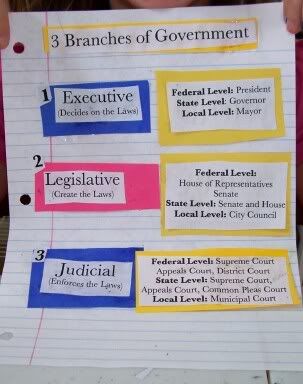 Tapestry of Grace, Year 3 Week 5
Tapestry of Grace, Year 3 Week 5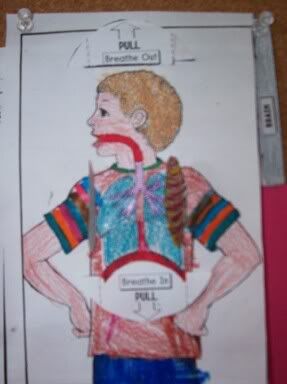 Life Science: We studied the respiratory system this week. We didn't have any additional reading but here's a project Camille did. It shows how the diaphragm expands to help us breathe since our lungs do not have any muscles.
Life Science: We studied the respiratory system this week. We didn't have any additional reading but here's a project Camille did. It shows how the diaphragm expands to help us breathe since our lungs do not have any muscles.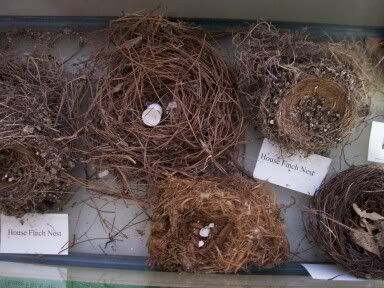
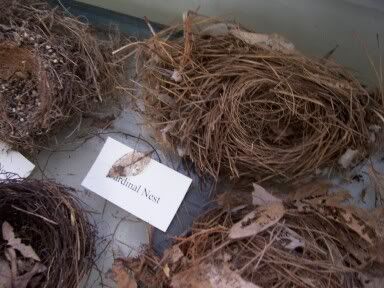
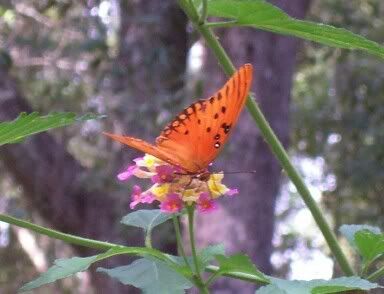
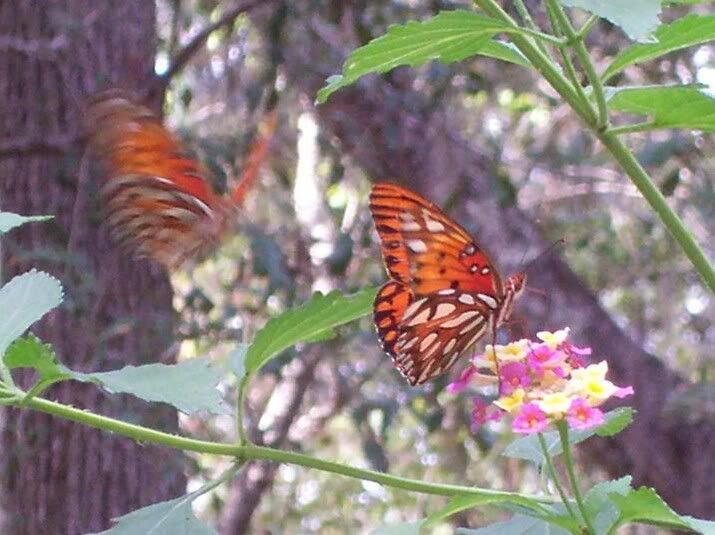
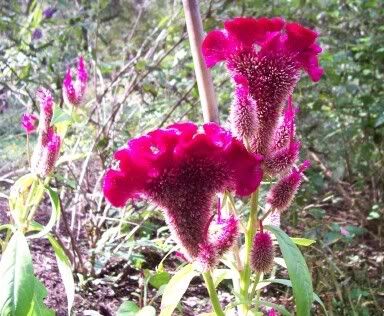

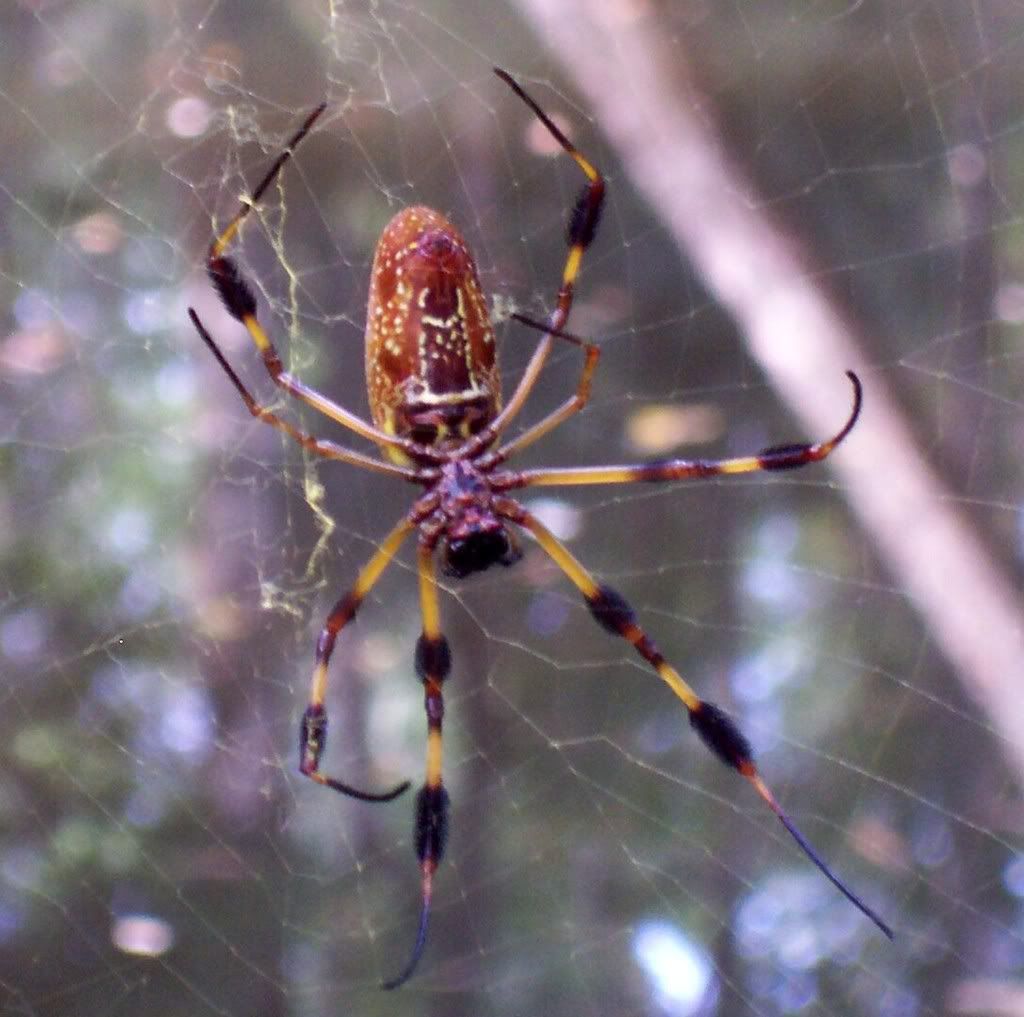
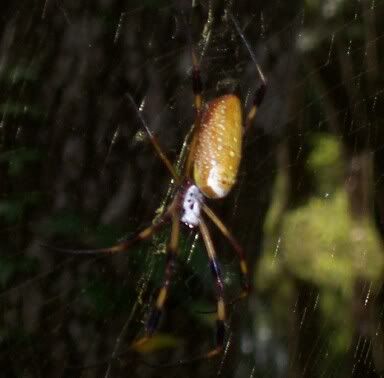
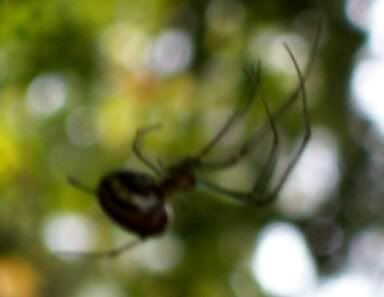
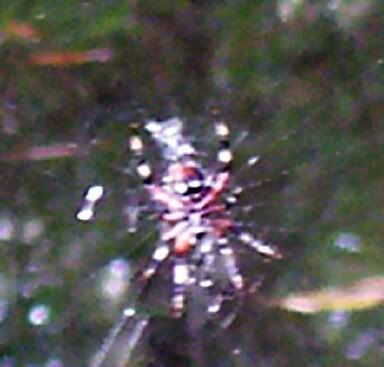


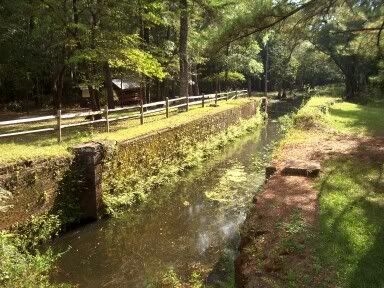



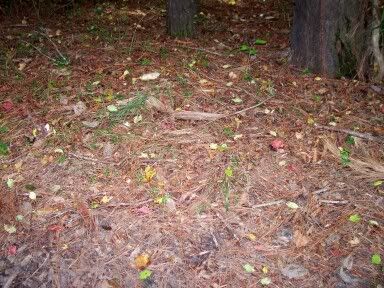
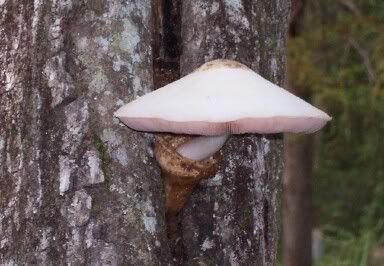
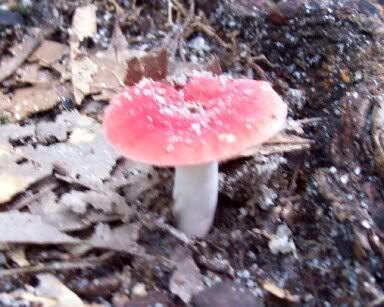
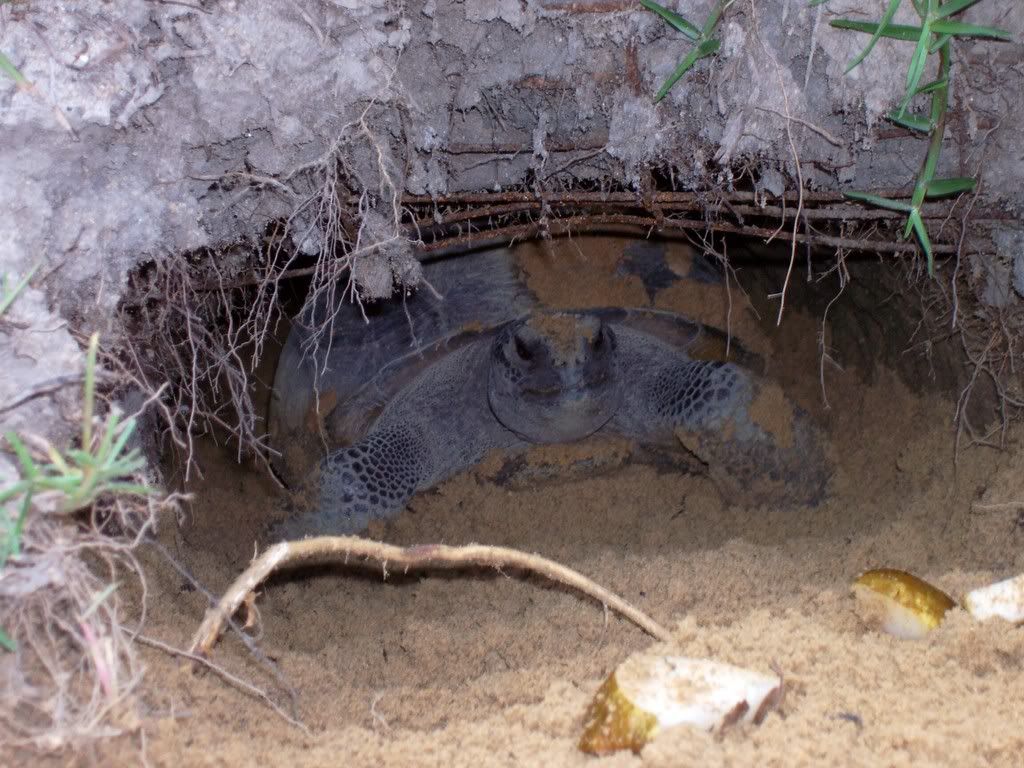
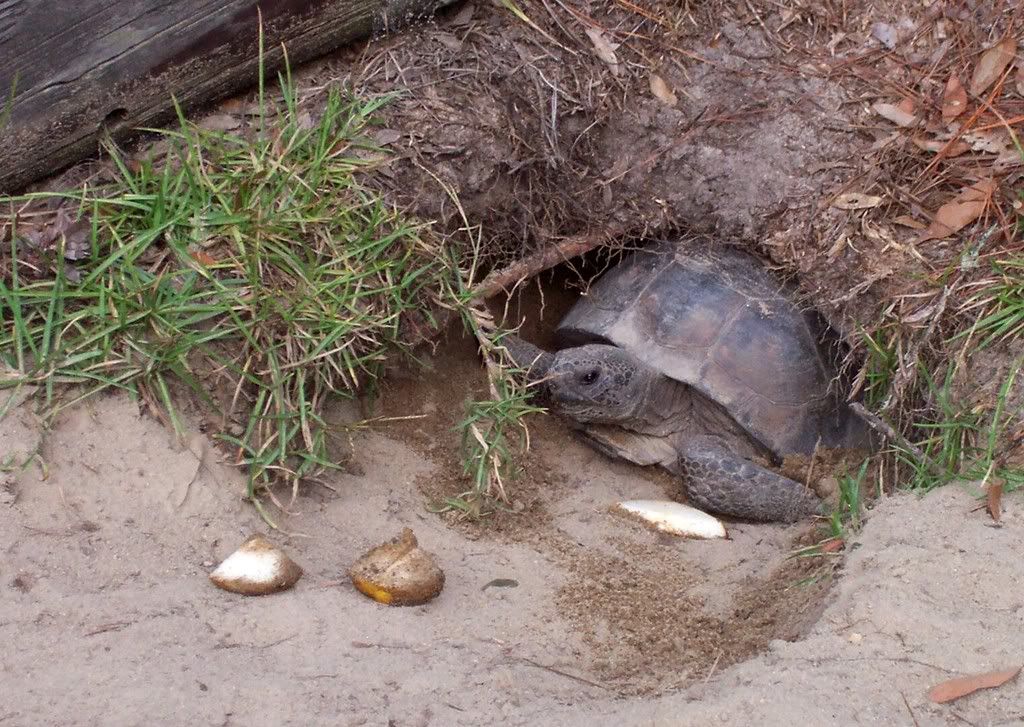
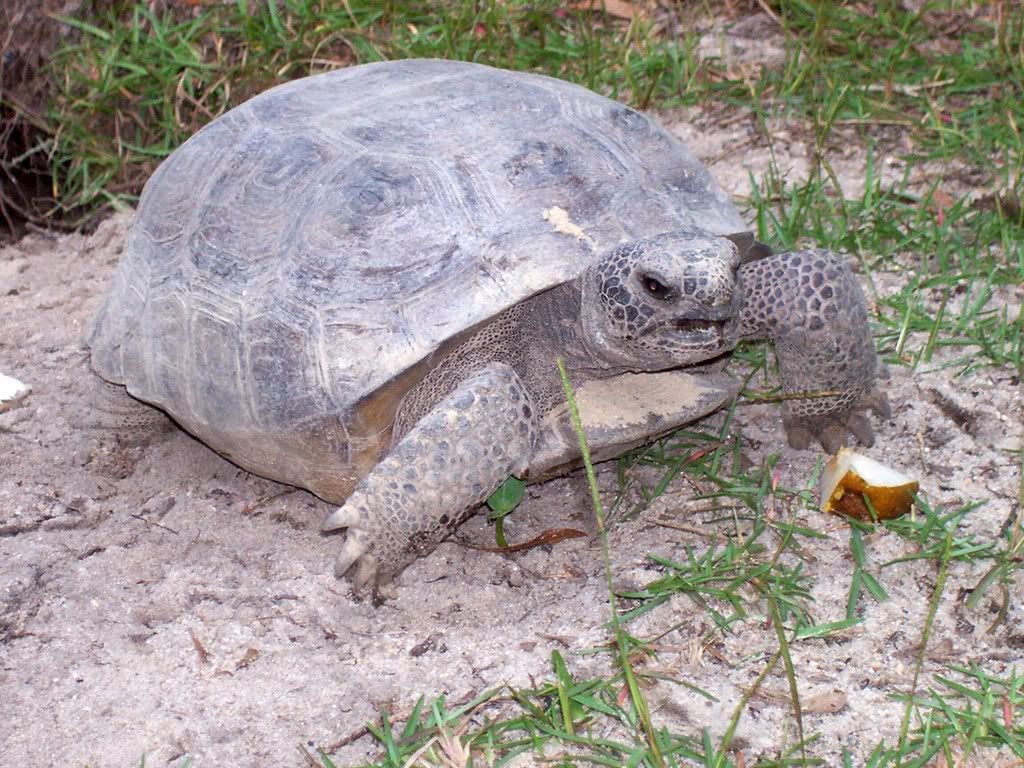
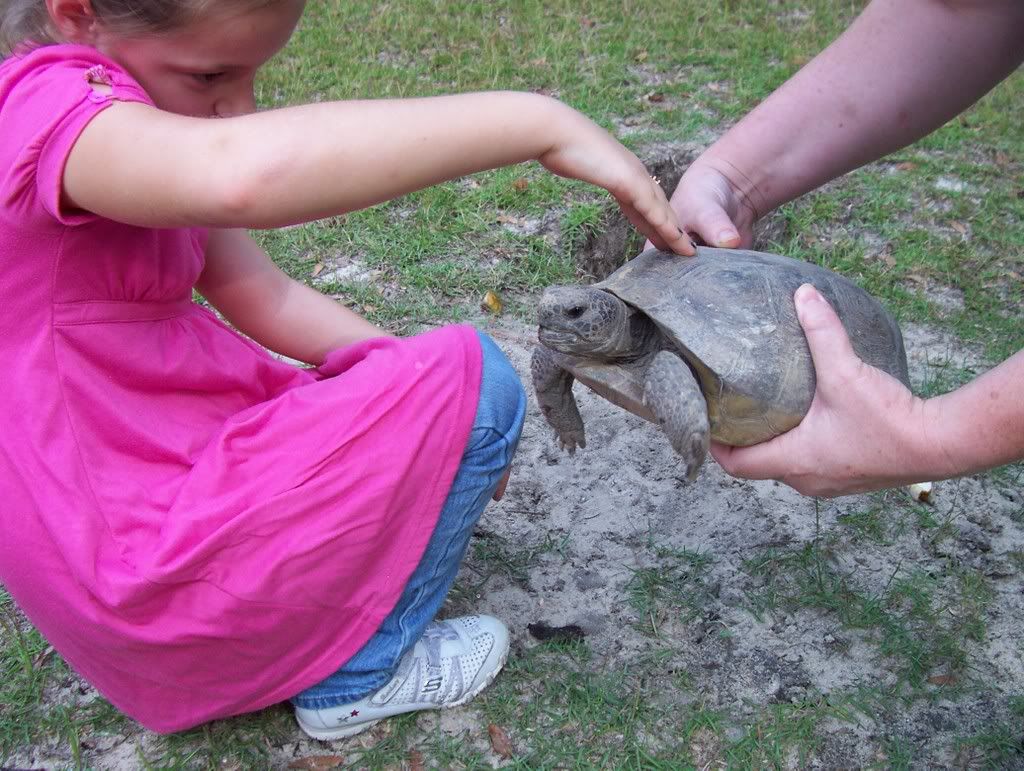
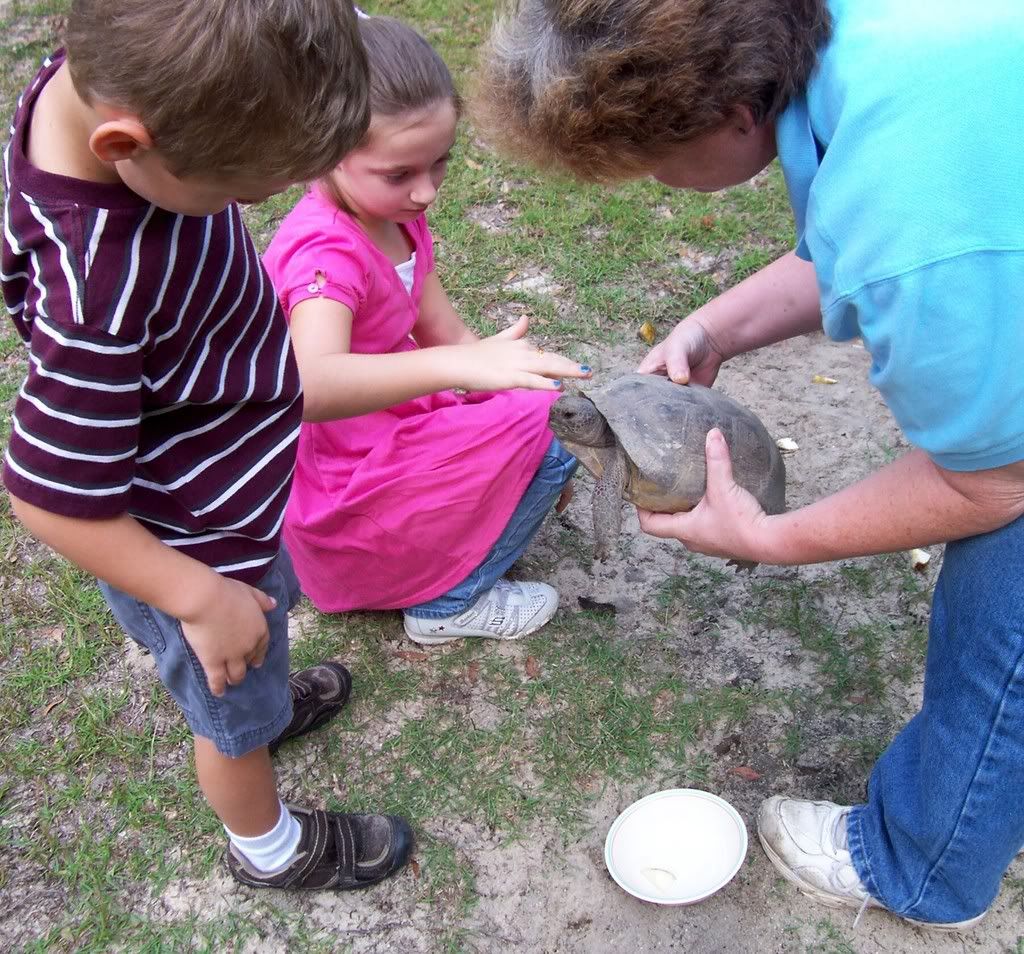





| First Grade 2006-07 | [−] |
| Second Grade 2007-08 | [−] |
| Books Read, 2nd Grade | [−] |

